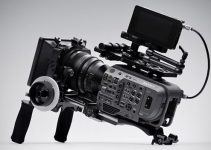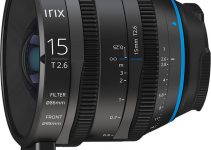More than four years ago, Sony made a huge splash in the filmmaking industry with the introduction of the original A7S – the very first affordable low-light-seeing mirrorless beast in a compact form-factor. Fast forward to 2018, the Japanese camera maker is still considered to be a market leader when it comes to the latest sensor technology developments and top-notch low-light performance of their cameras.
With the introduction of the A7III earlier this year, the company moved another step in the right direction while Panasonic has finally decided to join the low-light mirrorless camera race and sought out to challenge Sony’s reputation by introducing the Lumix GH5S.
With the Sony A7 III and the Panasonic GH5S currently being two of the most talked-about mirrorless cameras, let’s find out which rival would perform better in a controlled low-light shooting environment. Filmmaker Scott McKenna provides some interesting footage captured on both cameras at varying ISO levels in the video comparison between the two below.
Before we dive right into the test, it’s worth mentioning that both cameras used similar settings and equipment in order to carry out a fair comparison. Sony FE 16-35mm f/2.8 GM and a Lumix G X Vario 12-35mm f/2.8 lenses were utilized both set at f/4 aperture. The footage was recorded in 4K at 24fps using each camera’s native standard picture profile (not Log). The entire scene was lit by a dim light source placed off-screen.
Now, looking at the footage captured on the Sony A7 III, it’s safe to say that from ISO 6400 and above, the captured video has minimal noise that isn’t really noticeable until you reach ISO 12,800. Even at ISO 80,000 the image only has minimal noise that could easily be tackled in post.
At a whopping ISO of 102,000, noise becomes present, even though it’s not entirely distracting.
In addition, there is very little to no signs of color shift in the A7 III video across all ISO levels, meaning that even at the highest ISO setting, you’ll able to attain footage that would be perfectly sufficient for a wide range of creative applications.
The video coming from the GH5S, on the other hand, tells a bit different story. On the GH5S, the subject doesn’t appear visible or well-lit until ISO 20,000, whereas the A7III allows us to see the subject at ISO 6,400. At ISO 20,000, noise is unfortunately already visible, albeit minority distracting.
Moving up to ISO 25,600, however, the footage begins to fall apart with noticeable noise. As ISOs are increased, it’s clear that the A7III has a much brighter image with less noise. That being said, any video shot at ISO 32,000 and above is outright unusable, noisy, and full of color-shift on the GH5S.
From the comparison, it’s safe to conclude that if you need a full-frame camera to primarily work in low-light environments, then the Sony A7III is definitely the offering you should opt for.
On the other hand, the GH5S’ great image quality and easy-to-use interface have earned its praise from filmmakers with more controlled lighting conditions, making the camera a solid option for those folks looking for a reliable Micro 4/3 camera system with some excellent low light capabilities.
[source: Scott McKenna]
Order Links:
Panasonic Lumix DC-GH5S Mirrorless Micro Four Thirds Digital Camera (B&H, Amazon)
Sony Alpha a7 III Mirrorless Digital Camera (Body Only) (B&H, Amazon)
Disclaimer: As an Amazon Associate partner and participant in B&H and Adorama Affiliate programmes, we earn a small comission from each purchase made through the affiliate links listed above at no additional cost to you.



